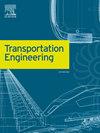Retrofitting existing rolling stock for wire-free travel: Exploring energy storage solutions for partial catenary-free light rail vehicle
Q1 Engineering
引用次数: 0
Abstract
This paper investigates the retrofitting possibilities of equipping existing rolling stock with a catenary-free system for tramways and light rail networks. In this paper, the term 'tramway' includes light rail vehicle (LRV) as defined in EN17343. Installation, ongoing maintenance, and replacement of electric traction systems is a major cost for light rail operators. Installing visible overhead line equipment (OLE) in historical cities has always been a challenge. Past records have shown that the significant capital cost and the time it takes to approve a transport scheme are major barriers to the implementation of light rail vehicle proposals. This paper shows that adopting a catenary-free (wire-free) system can reduce the capital costs of light rail system design and construction, especially in the city centre. Battery-powered transport, once considered economically unfeasible, now shows promise even for large vehicles including urban and main line rail. A thorough analysis of various energy storage options has been investigated, including parameters such as maximum C-rate (the rate of time in which it takes to charge or discharge a battery), specific energy, energy density, safety, lifespan, and cost comparison. Findings have shown that the state-of-the-art solution using Lithium-ion Capacitors (LiC) increases the energy storage weight of the light rail vehicle by just 2.1 tons, equivalent to 3.5% of the light rail's total weight, making it a feasible option to retrofit. The hybrid energy solution contributes to higher energy and higher power densities, as well as longer cycle life compared to pure lithium-ion batteries. It's also more environmentally friendly. This work has implications for other all mass transit systems. The paper provides an innovative solution that bridges the gap between energy storage technology and rail transport design.
求助全文
约1分钟内获得全文
求助全文
来源期刊

Transportation Engineering
Engineering-Automotive Engineering
CiteScore
8.10
自引率
0.00%
发文量
46
审稿时长
90 days
 求助内容:
求助内容: 应助结果提醒方式:
应助结果提醒方式:


